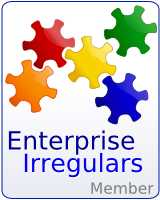SAP appoints its first CTO
I had the chance to meet Vishal last year and was impressed by the conversation. Additionally, from what I hear, he's well respected throughout SAP. He's based in Palo Alto which may go a ways in countering some of the chatter about how the power base is moving back to Germany after Shai's departure.
Here's a podcast that Jeff Nolan arranged last year with Vishal and a few comments Jeff had at the time:
I was at the table when John was talking with Vishal and it really was a fascinating conversation. Vishal is, as many of you no doubt already know, the Chief Software Architect for SAP and he is based here in Palo Alto (although I truly believe that after doing this for the last couple of years his citizenship may in fact be from Lufthansa). The thing I like about Vishal is that he is not a longtime SAP employee (which isn’t necessarily a bad thing) and he is disarmingly candid and objective… when he speaks he is not just repeating talking points somebody else prepared, he is speaking from what he believes.
[SAP][Vishal Sikka]





